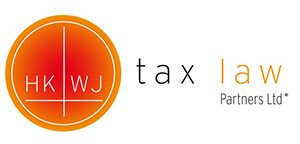Patent Box Tax Incentive Regime introduced in Hong Kong
To promote the research and development (“R&D”) sector and the creative industries in Hong Kong to exploit their intellectual property (“IP”) rights for economic growth and competitiveness, the Hong Kong government has introduced the Patent Box Regime.
This tax incentive program allows eligible companies to enjoy a preferential tax rate on their profits derived from qualifying IP assets. The regime is applicable for the year of assessment starting on or after 1 April 2023.
What is the tax concession?
A taxpayer who meets the specified requirements of the Patent Box Regime is eligible for tax concessions. Under these concessions, the portion of the taxpayer’s assessable profits derived from eligible IP income may be taxed at a concessionary tax rate of 5% under Hong Kong’s profits tax.
Eligible IP assets
To qualify for the tax concession under the Patent Box Regime, the income must be derived from an eligible IP asset, which includes the following:
- Patents;
- Plant variety rights;
- Copyrighted software under the Copyright Ordinance (Cap. 528) or under the law of any place outside of Hong Kong.
Who is eligible for the Patent Box Regime?
Eligible person can be a person other than the legal owner of the eligible IP, who is entitled to the economic benefits generated from the eligible IP (i.e. economic owner).
Which IP income is eligible for the Patent Box Regime?
The following income will be regarded as eligible IP income:
1) Income derived from an eligible IP in respect of:
- the exhibition or use of, or a right to exhibit or use (whether in or outside Hong Kong) the IP;
- the imparting of, or undertaking to impart, the knowledge directly or indirectly connected with the use (whether in or outside Hong Kong) of the IP;
2) Income arising from the sale of an eligible IP;
3) Embedded IP income, which refers to the portion of income from the sale of a product or service, on a just and reasonable basis, attributable to the value of the eligible IP;
4) Amount of insurance, damages or compensation derived in relation to an eligible IP.
Concessionary Portion of Assessable Profits
The OECD nexus approach requires that profits eligible for the preferential tax rate must be linked to the eligible IP assets’ substantial activities conducted within Hong Kong.
The portion of the eligible IP income that will be taxed at the 5% concessionary rate based on the R&D fraction, capped at 100%, is as follows:
Assessable profits x [eligible R&D expenditure *130% / (eligible R&D expenditure + non-eligible expenditure)]
- Eligible R&D expenditure refers to expenditures incurred for (i) R&D activities undertaken by the taxpayer or outsourced to unrelated parties, and (ii) R&D activities outsourced to domestic related parties that are undertaken in Hong Kong.
- Non-eligible R&D expenditure refers to (i) acquisition cost of the eligible IP, (ii) R&D activities outsourced to HK resident associated parties and undertaken outside Hong Kong and (iii) R&D activities outsourced to non-HK resident associated parties and undertaken in or outside Hong Kong
Please note that interest payments and payments for any land or building (including any alteration, addition or extension) are not regarded as eligible R&D expenditure or non-eligible expenditure.
Treatment of losses
A loss incurred in relation to income benefiting from the patent box incentive can be set off against assessable profits with reference to the tax rate difference (if any).
Transitional measures
To allow sufficient time for taxpayers to adopt the tracking requirements imposed by the nexus approach, eligible persons can calculate their R&D fraction using a 3-year rolling average (i.e. for the years of assessment from 2023/24 to 2025/26. This applies to both eligible and non-eligible R&D expenditures.
Eligible person’s obligations
1. Local registration requirements:
- For non-Hong Kong patent: application for grant of an original grant patent or short-term patent (“STP”) in Hong Kong for the underlying invention of the non-Hong Kong patent is required. A post-granted substantive examination request is required to file for STP.
- For non-Hong Kong plant variety right: application is required under the Plant Varieties Protection Ordinance (Cap. 490).
2. Retain records of transactions, acts, or operations related to the eligible IP income. These records should be retained until the later of two dates: either 7 years after the completion of those transactions, acts, or operations; or 7 years after making an election under section 4 of Schedule 17FD to the Inland Revenue Ordinance.
3. Written notification to the Commissioner that the relevant eligible IP income is chargeable to profits tax within 4 months after the end of basis in case no profits tax return is issued.
HKWJ Tax Law can help with the Patent Box Regime
Understanding the Patent Box Regime could be highly beneficial for parties involved in R&D and innovative businesses in Hong Kong.
This regime encourages companies to protect and commercialise their IP rights by offering a reduced tax rate on profits generated from qualifying IP assets.
Our tax experts are here to provide personalised advice to help you understand and apply this new regime. Contact our experienced tax professionals below for a detailed analysis tailored to your specific circumstances.






